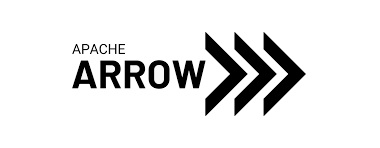Understanding Apache Arrow: The Future of High-Performance Data Processing

Introduction
In today’s world of big data and analytics, speed and efficiency are critical. Organizations are continuously looking for technologies that enable fast data interchange and processing across systems and programming languages. Apache Arrow is one such project that is revolutionizing how data is stored, transferred, and analyzed in memory.
This article provides a comprehensive introduction to Apache Arrow—its architecture, key features, advantages, and how it is shaping the future of modern data systems.
What Is Apache Arrow?
Apache Arrow is an open-source, cross-language development platform for in-memory data. It defines a standardized columnar memory format that is designed for efficient analytical operations and fast data interchange between different systems and programming languages.
Unlike traditional data formats that serialize data into row-based structures, Apache Arrow uses a columnar memory layout, enabling high-performance analytics and interoperability between languages such as Python, Java, C++, R, Go, and Rust.
Apache Arrow was developed under the Apache Software Foundation (ASF) and has become a foundational technology used by many big data frameworks like Apache Spark, Apache Parquet, Pandas, and Dremio.
Why Apache Arrow Was Created
Before Arrow, data engineers often faced performance bottlenecks when transferring large datasets between systems. For example, when data moved between Python and Java-based systems, it had to be serialized and deserialized repeatedly—consuming time and CPU resources.
Apache Arrow was created to eliminate serialization overhead and enable zero-copy data sharing between systems. This makes it particularly valuable in environments where data needs to flow between multiple analytics tools efficiently.
Key Features of Apache Arrow
1. Columnar Memory Format
Arrow’s columnar layout stores data by columns rather than by rows, making it extremely efficient for analytical workloads. Columnar storage improves:
- Cache locality
- SIMD (Single Instruction Multiple Data) vectorization
- Data compression ratios
This design results in faster scan performance compared to row-based formats.
2. Zero-Copy Data Sharing
Arrow enables zero-copy reads, which means data can be shared between processes and languages without serialization or duplication. This drastically reduces latency in data pipelines.
3. Cross-Language Compatibility
Arrow provides libraries for multiple languages—Python, Java, C++, Go, R, Ruby, and others—making it an ideal solution for multi-language data platforms.
4. Interoperability with Other Systems
Apache Arrow integrates seamlessly with popular tools like:
- Apache Parquet (for on-disk columnar storage)
- Apache Spark (for distributed data processing)
- Pandas and Polars (for in-memory analytics)
- Dremio, DuckDB, and Flight RPC (for data query and exchange)
5. Efficient Data Analytics
With Arrow, analytical workloads that involve filtering, aggregation, or scanning can be performed much faster due to its optimized columnar design.
6. Arrow Flight
Apache Arrow includes Arrow Flight, a high-performance RPC (Remote Procedure Call) framework designed for fast data transport over networks. It replaces traditional REST or gRPC approaches with a more efficient binary protocol.
Architecture Overview
At its core, Apache Arrow is built around a columnar memory specification. The architecture consists of:
- Arrow Arrays: Basic building blocks containing columns of data.
- RecordBatches: Collections of arrays representing a table’s rows.
- Schemas: Metadata that define data types and structures.
- Arrow Flight: A protocol for fast transport of Arrow data between systems.
This modular design allows Arrow to operate efficiently in-memory and integrate seamlessly with other big data components.
Advantages of Using Apache Arrow
- High Performance – Drastically reduces CPU overhead by eliminating serialization costs.
- Interoperability – Enables seamless data exchange between programming languages.
- Reduced Memory Usage – Columnar format improves compression and reduces data duplication.
- Open Source and Actively Maintained – Backed by the Apache Software Foundation with contributions from major companies like Netflix, NVIDIA, and Databricks.
- Future-Proof Design – Built to integrate with modern analytics, machine learning, and AI workflows.
Common Use Cases
1. Data Analytics and BI Tools
Apache Arrow is used in analytics platforms (like Dremio and DuckDB) to perform fast in-memory computations on large datasets.
2. Machine Learning Pipelines
ML frameworks leverage Arrow to quickly pass data between Python (NumPy/Pandas) and C++ backends without conversion overhead.
3. ETL and Data Engineering
ETL processes benefit from Arrow’s zero-copy mechanism, minimizing latency when transforming or transferring data between systems.
4. Big Data Interoperability
Arrow bridges the gap between big data tools, making it easier to move data between Spark, Flink, and Pandas without serialization.
Apache Arrow vs. Apache Parquet
While both are columnar formats, Arrow and Parquet serve different purposes:
| Feature | Apache Arrow | Apache Parquet |
|---|---|---|
| Storage Type | In-memory | On-disk |
| Use Case | Fast analytics and data interchange | Long-term data storage |
| Serialization | Zero-copy (no serialization needed) | Requires serialization/deserialization |
| Performance | Optimized for in-memory speed | Optimized for storage efficiency |
In practice, both are often used together—Parquet for disk storage and Arrow for in-memory processing.
Ecosystem and Integrations
Apache Arrow has become a core technology in the modern data ecosystem. It is integrated into:
- Pandas 2.0+ for accelerated dataframes
- Apache Spark for optimized columnar operations
- Apache Drill and Dremio for query acceleration
- PyArrow library, enabling Python users to easily leverage Arrow’s performance
Its integration with cloud services and GPU computing (through Arrow CUDA) also makes it suitable for high-performance and AI workloads.
Conclusion
Apache Arrow has redefined how data is processed and shared in modern analytics systems. Its in-memory columnar format, zero-copy capabilities, and cross-language support make it a foundational technology for high-performance computing, big data, and AI pipelines.
As data systems continue to evolve, Apache Arrow’s role will only become more critical—bridging the gap between data storage, computation, and analytics with unmatched efficiency.
If you work with data-intensive applications or distributed processing frameworks, learning and implementing Apache Arrow can significantly enhance your performance and scalability.